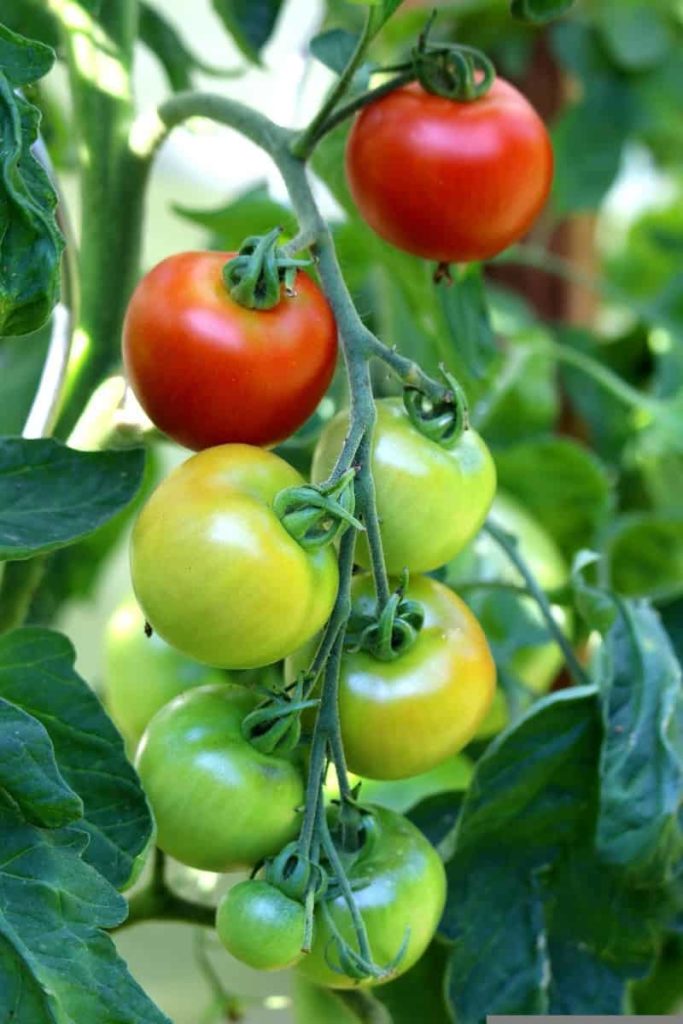Tomato is an edible berry of the Solanum Lycopersicum plant known as the Tomato plant. Tomatoes need three things to thrive: sun, nutritious soil, and support. Support comes from a deep root system and a good support structure that keeps your fruit away from the ground and allows a lot of airflow. Let’s check out more information on how to grow Tomatoes in Michigan below.
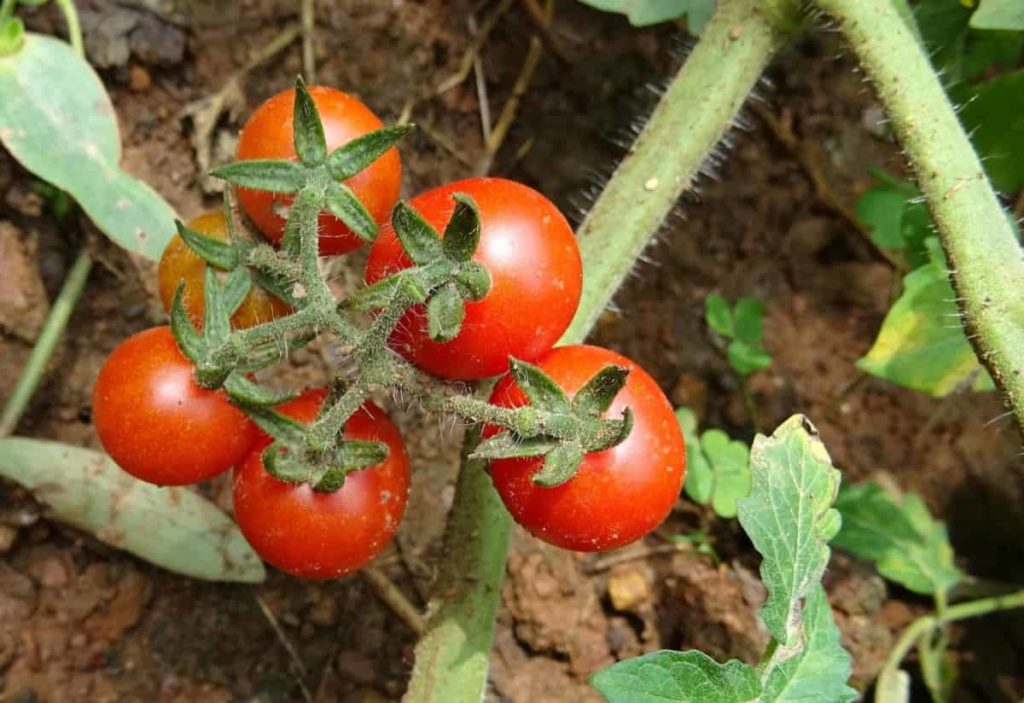
Facts about Tomato planting in Michigan
Tomatoes are easy to grow plants, and a few plants provide a suitable crop for most families. The quality of the fruit picked in the garden when fully ripe is far superior to anything available. The Tomato plant is a mild, warm perennial grown annually in summer gardens. Michigan is mostly considered Hardiness Zone 5, while some lower-level areas are Hardiness Zone 6. In the USA, Michigan is the tenth largest producer of fresh Tomatoes.
Michigan produces 132,600 tons of Tomatoes for processing and 60 million pounds for the fresh market. The total value of processed and fresh Michigan Tomatoes is $ 35.5 million. The warm days of late July and early August lead to the ripening of fresh Tomatoes on bulls across Michigan. Many Tomatoes, including Slicing, Roma (berry), Cherry, Grape, and many varieties, are grown in Michigan for fresh and processed markets.
Fresh Tomatoes are usually available from mid-August to mid-October, but an increase in greenhouse and hoop house production across the state has allowed some farmers to supply Tomatoes in early May and late November.
Heirloom Tomatoes in Michigan
Some Tomatoes now sold as “heirlooms” are a cross between two different heirlooms (cross in terms of purpose or nature) or a cross between heirloom and hybrid Tomatoes. The cross is then consolidated over several generations so that they become open-pollinated. Heirloom Tomato varieties come in various colours, including purple, pink, yellow, orange, striped marble, and unusual shapes and sizes.
Heirloom varieties can be especially delicious, perfect for introducing many flavours of Tomatoes. Many heirloom varieties have a long crop season, unlike some hybrids that are bred to ripen a heavy crop at the same time to facilitate a commercial crop. Heirloom Tomatoes can help your organization provide a steady supply during the growing season. Heirloom Tomatoes are colourful (they can be striped, yellow, and even purple) and are known for their deep flavour.
In case you missed it: Best Tomato Varieties in India: Hybrid, Rainy Season, and High Yield
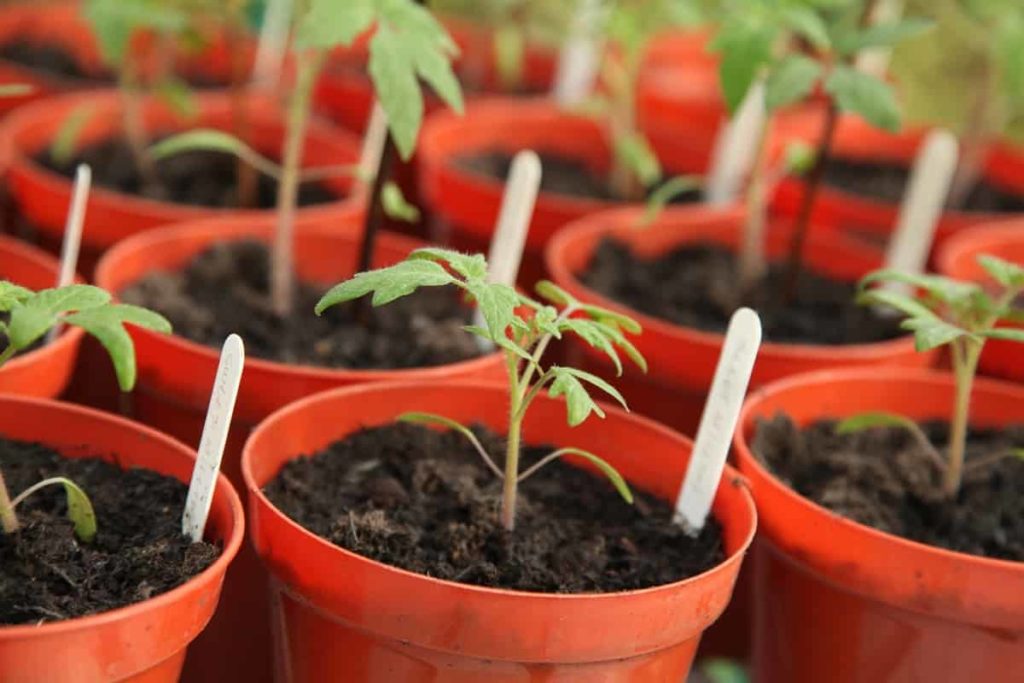
Some of the Michigan Heirloom Tomatoes varieties are Brandy Wine, Cherokee Purple, Oxheart, Rutgers, and Amish Paste. They are so tasty that you can serve them with olive oil and sea salt. Heirloom Tomatoes have recently gained popularity. Unlike hybrids, these Tomatoes grow well from seed. They come in unusual colours that include white, black, and striped but can be more difficult to grow. Heirloom Tomatoes are valued for their unusual shape and strong flavour, but they are more susceptible to certain diseases and pests.
The best Tomatoes to grow in Michigan
All-purpose Tomatoes are medium-sized and suitable for a variety of uses. Early varieties produce Tomatoes 49 days after transplanting.
Roma Tomatoes
Roma Tomatoes produce a large late summer crop ideal for canning, freezing, or even drying. Rooms are perfect for urban gardening and even for small space gardeners. It’s great for gardening containers, raised gardens, and even indoors.
Brandywine Tomato
Brandywine Tomato is an heirloom Tomato, meaning it has excellent Tomato properties and has been grown for decades. It is the hardest, tastiest, and easiest to grow all the heirloom Tomatoes. Brandywine Tomatoes love the heat. Therefore, the hotter and more humid your Brandywine Tomatoes are. You should also expect more Tomatoes because brandy wines love the Michigan summer. If one Tomato can be grown in horticultural pots in Michigan, it is brandy wine Tomatoes. It is one of the most adaptable Tomatoes, ideal for beginner gardeners in Michigan.
Early Girl Tomatoes
While some Tomatoes are heat-hardy, Early Girl Tomatoes are cold and hard. Early Girl Tomatoes grow in the cold Michigan climate. If you want the most delicious Tomatoes for early girls, you should grow them from mid to late spring. Vertical gardening is popular in Michigan cities and even suburbs with less land for horizontal cultivation. Early female Tomatoes do not need much room. They also grow well among other vegetables and plants. It makes ideal for raised garden beds, one of Michigan’s most popular gardening techniques.
In case you missed it: Stages of Growing Tomatoes from Seed: Steps, Time, and Lifecycle

Beefsteak Tomatoes
As the summer heats up, beefsteak Tomatoes get bigger and bigger. Look no further for low-maintenance vegetables. This very common hybrid Tomato grows well in Michigan. Beefsteak Tomatoes are considered a bell vegetable. Some vegetables are only good in the ground. Beefsteak is not a Tomato. You can grow them in window boxes, containers, garden beds, and even in poor soil.
Grape Tomato
Grape Tomato is one of the most versatile varieties of Tomato. Most Tomatoes do not require much water and can be grown in gardening pots, raised gardens, and traditional gardens. And if you grow them in gardening pots and don’t water your plants properly, your Tomatoes may die in a few days.
Roma Tomatoes
Roma Tomatoes are the size of your fist and look oval. They are great for converting to canning or sauce. They grow for about two months during the summer, so they are prime for purchase between June and August.
Celebrity Tomatoes
Celebrity Tomatoes are another type of Tomato that is incredibly resistant to diseases and pests, making it ideal for beginner gardeners who want to grow Tomatoes for the first time. In addition, the celebrity Tomato is a type of Tomato that produces some of the highest yields of all Tomatoes. Best of all, it does all summer long in late fall.
Big boy
Another hybrid Tomato, this classic round red grows well in warm temperatures and deep, moist soil.
Grape and cherry
These small Tomatoes are shaped like the fruit named after them and can be tangy or sweet. They grow in clusters and are perfect for your deck or patio like small plants. Unlike other vegetables, cherry Tomato plants do not need much water to grow, flower, and bloom in one crop that can be cut more than once.
It is great for unusually dry summers. But, like grape Tomatoes, cherry Tomatoes are dangerous for many things. Garden insects like to eat Tomato flowers, small Tomatoes, and even the leaves of Tomato plants. Not only this, with the help of insects, they can attack and eat Tomato leaves.
In case you missed it: Tomato Growing Tips, Ideas, Secrets, and Techniques
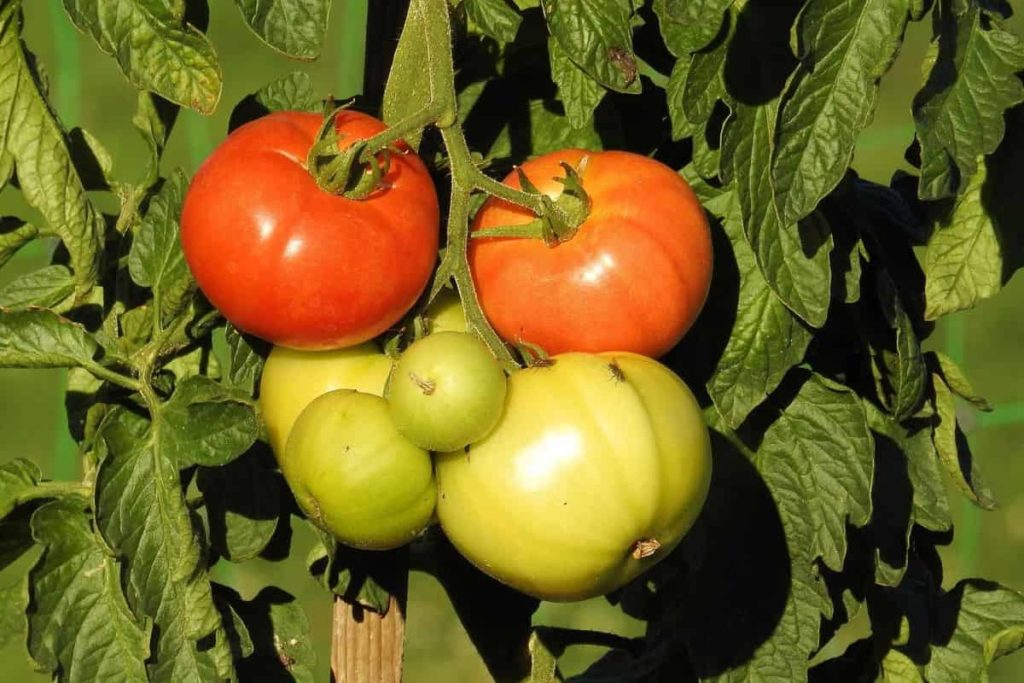
Yellow pear
These cut-shaped yellow Tomatoes. They are like pears, only very small. They are known for their mild to sweet taste and are perfect for making or preserving pickles.
Classic hybrids
Traditional hybrid Tomatoes include Rutgers, Beefsteak, and Big Boy. Popular varieties include Pik-Red – an early hybrid, Spring set – a major crop Tomato, and Small Fry – a small Tomato variety that will grow in containers. The wide range of classic hybrids and reliable growth makes them perfect for less experienced gardeners who want good yields.
How to grow Tomatoes in Michigan: Secrets
Start early – Tomatoes are a warm-season crop and thrive best when temperatures are between 21 and 23°C. Many gardeners do transplants in the last week or two of May. Tomatoes take a long time to germinate, and using a transplant gives the Tomatoes plenty of time to produce the right fruit. Buy healthy transplants.
It is possible to start Tomatoes with seeds indoors about six to eight weeks before you want to move them out. It is essential to use fluorescent lighting to produce healthy, green plants. For many gardeners, it is easier to buy high-quality transplants than to grow them.
If you buy transplants – Choose 6-to-10-inch tall, dark green, stocky plants with pencil-thick stems. Don’t buy tall, stunted plants or leaf spots or yellow or curling leaves. They are already in trouble. Avoid plants that have flowers or fruits. They will not be big producers. Once the plants begin to flower and bear fruit, they do not grow very large. So picking flowers or fruits will not change the pattern of growth.
Transplanting – Tomatoes cannot tolerate cold temperatures or cold soil. If the plants are tall, keep them deep and on a slant. Apply them in the evening time or on a cloudy day to reduce the shock of the transplant. A thin starter fertilizer can be used if desired. If there is a cold warning, cover the plants at night. Remove the cover during the day.
Propagation – “Tomatoes” can be transplanted from 24 to 36 inches apart after all the risk of frost has passed. When the plants are in full bloom, light pollen will help them get pollen. Plant a “Tomato” cage around the plants before they grow if you grow large varieties.
Site selection for growing Tomatoes in Michigan
Create a sunny garden for plants that receive at least six hours of sunlight a day for better sunlight all day. Cover the stem with soil as high as the first set of leaves when planting. It encourages root production, and more roots mean more yield. You can grow Tomatoes successfully in the garden or in large pots.
In case you missed it: Growing Organic Tomatoes From Seeds – At Home, In Balcony, Outdoors, Indoors, Terrace, Backyard
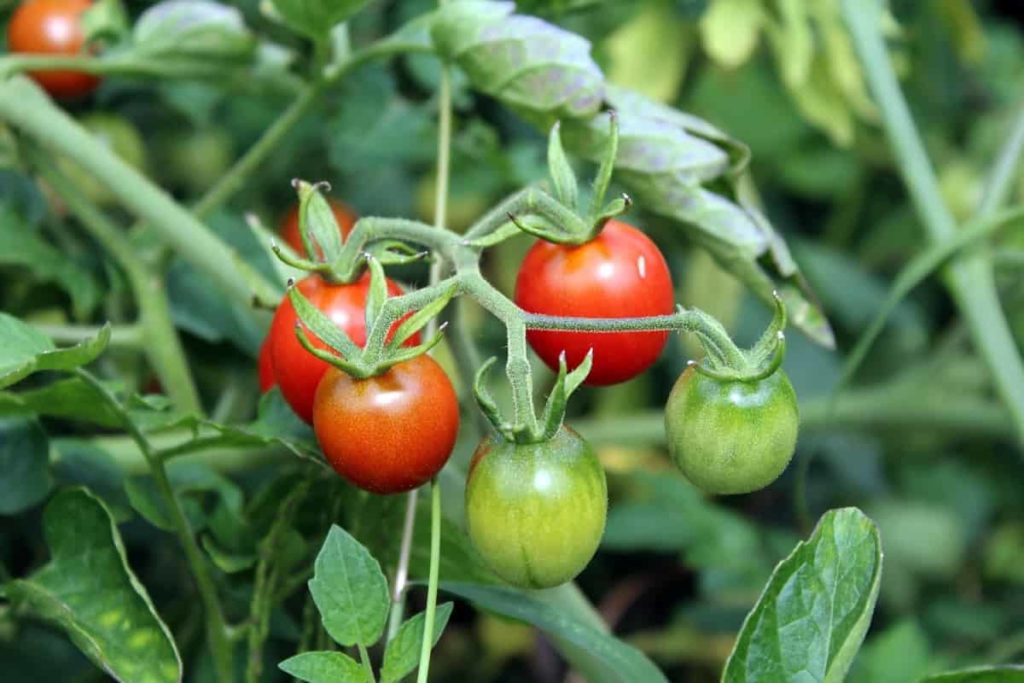
And to avoid damaging the roots later, don’t forget to tie the plants to a long rope or wire cage as soon as they are planted. Apply a fresh layer of compost to the topsoil, speed up to the bed to loosen the soil, and work in the compost. Tomatoes prefer dry side soil.
Tomato plant care
Tomato plants need about 1 to 2 inches of water each week. Both underwater and excess water can slow down the growth of Tomatoes. When underwater, the plant will not be able to absorb the nutrients it needs for rapid growth. Adding more water will stop air circulation around the roots, and the saturated roots will stop and not be able to absorb enough water, or they will rot. Fertilize the plants every 4 to 6 weeks during the growing season so that they are fed continuously and can produce juicy Tomatoes all summer.
If your Tomatoes are growing too slowly, test your soil to see if they are nutrient deficient. In addition to stunted growth, a common symptom of nutrient deficiencies is when the plant leaves begin to turn yellow. To make sure your Tomatoes have enough nutrients, put a lot of fertilizer in the bed. Also, you can add a good amount of fertilizer to each hole under your transplants. Nitrogen is a nutrient that is usually lacking in the garden. Planting along with legumes such as Peas or Beans will add nitrogen to the soil.
Tips to keep your Tomato crop healthy
To reduce the chances of disease and pest problems, rotate the location of your Tomato crop each year, and do not plant in areas where no one in the nightshade family – Peppers, Tomatoes, Eggplants, and Potatoes. Also, avoid planting near the shade of any tree, especially the black walnut tree, whose roots can kill Tomato roots.
Compost and organic fertilizers will strengthen your soil, and crushed eggshells offer a dose of calcium that encourages healthy Tomato production. Leaf diseases can be caused by spraying water on the plant, so water should not ideally come from the sprinkler system. Finally, don’t be discouraged if your crops fail despite your best efforts. Farmers’ markets will be filled with locally grown, ripe Tomatoes by July and August.
Harvesting Tomatoes in Michigan
As you may have already guessed, two important factors determine when you should harvest your Tomatoes: the physical characteristics of the Tomatoes and the season (time). Tomatoes are ready for harvest when the fruits are red and strong. At the end of the season, green color fruits can be cooked on a shaded window sill. Most gardeners usually rely on the physical characteristics of Tomatoes to determine if they are ready to pick the plant. Generally, you should harvest Tomatoes if they have the following physical characteristics:
In case you missed it: The Best Fertilizer for Tomatoes in Pots
- The whole Tomatoes are a solid red color. If the Tomato is a light shade of red, it is not ready for harvest
- The Tomato is slightly soft. Too hard means it is not ready. Being very soft means it is overripe (but still edible)
- Easily de-attached from the plant.
Frequently asked questions about Tomatoes growing in Michigan (FAQ)
What Tomatoes in Michigan grow well?
Growing Tomatoes in Michigan can be difficult compared to growing them in warmer climates, as these vegetables prefer longer, warmer days. In addition, Michigan is located in USDA Zones 2b to 4b.
How long can you plant Tomatoes in Michigan?
Warm vegetables, such as Cucumbers, Melons, Squash, Peppers, and Tomatoes, are sensitive to cold temperatures and die from the cold. Therefore, they cannot be safely planted outside unless the threat of frost is removed unless they are placed under warm hats, tents, or covers.
When should I start my Tomato plants in Michigan?
In Michigan, many gardeners transplant Tomatoes around Memorial Day in late May. However, if you want to start your Tomatoes from seed inside, it is best to start six to eight weeks before transplanting them.
When do Tomatoes turn red in Michigan?
But in general, the flowers should start to turn red about 6-8 weeks after pollination.
- Broccoli Seed Germination and Selection
- Asparagus Seed Germination and Variety Selection
- Seasonal Flower Gardening: Best Practices for Spring, Summer, Fall, and Winter
- How to Grow Hibiscus from Flower
- Plantation Ideas for Home Decoration: A Beginners Guide
- Flower Garden Designs and Layouts for Beginners
- Planting and Spacing Techniques in Papaya: A Beginner’s Guide
- Growing Gold: Essential Techniques for Planting Pineapples
- How to Make Kalanchoe Plant Bushy: Home Remedies and Solutions
- 11 Reasons Why Your Gardenia is Not Blooming: Home Remedies and Solutions
- Eco Elegance: The Guide to Designing a Drought-Tolerant Landscape
- Gardening on a Slope: Strategies for Hillside Landscaping
- Nourish and Flourish: Top Organic Mulches for Thriving House Plants
- Everything You Want to Know about Indian Mogra Flower: Discover Uses and Growing
- Green Thumb Success: Expert Tips for Cultivating Greenhouse Pumpkins All Year Round
- Maximize Growth & Flavor: The Ultimate Guide to Companion Planting in Herb Gardens
- How to Control Rhododendron Problems Naturally: Home Remedies and Organic Ways to Fix Them
- Natural Magic: The Remarkable Benefits of Cinnamon for Plants
- Best Steps to Revive Dying Tulip with Natural and Organic Treatment
- 10 Reasons Why Your Angel Trumpet is Not Blooming: Remedies and Treatment
- How to Fix Periwinkle Leaf and Flower-Related Problems: Natural Remedies and Solutions
- How to Fix Zinnias Leaf and Flower Problems: Discover Natural and Home Remedies
- Organic Steps to Induce Lemon Tree Flowers: A Comprehensive Guide
- Bloom Booster: Crafting the Perfect Homemade Bougainvillea Fertilizer
- Optimizing Growth: A Guide to Applying NPK Fertilizer for Potted Plants
- 10 Best Homemade Fertilizers for Rubber Plant: DIY Recipes and Application Method
- How to Boost Female Pumpkin Flowers: Effective Steps for More Flowers and High Yields
- Transform Your Indoor Garden: Top Benefits of Pink Salt for Houseplants
- 10 Best Homemade Fertilizers for Peacock Plants (Calathea): Easy DIY Guide
- Unlock Blooms: 9 Reasons Why Your Potted Chrysanthemum is Not Blooming
- 8 Reasons Why Your Potted Hibiscus is Not Blooming: Fix it with Simple Solutions
- Unlock Blooms: 9 Key Reasons Your Potted Frangipani Won’t Flower
- 10 Reasons Why Is My Ice Plant Not Blooming: Remedies and Treatment
- 10 Reasons Why My Potted Hydrangea Not Blooming: Treatment and Remedies
- 10 Reasons Why is My Wisteria Not Blooming: Remedies and Treatment
- 10 Reasons Why is My Goldfish Plant Not Blooming: Remedies and Treatment
